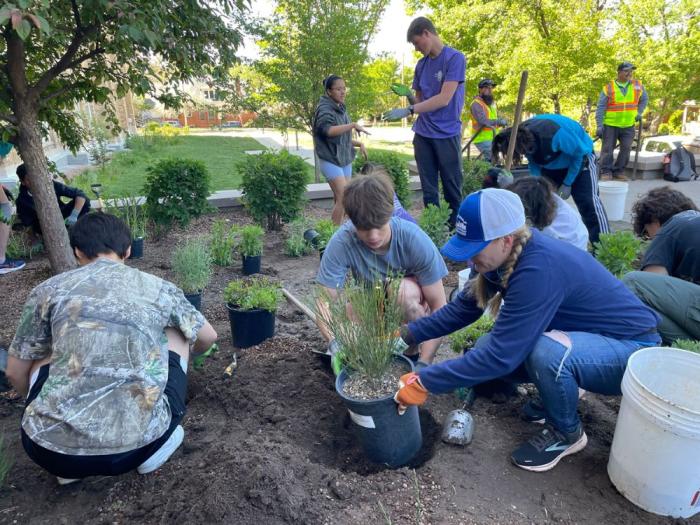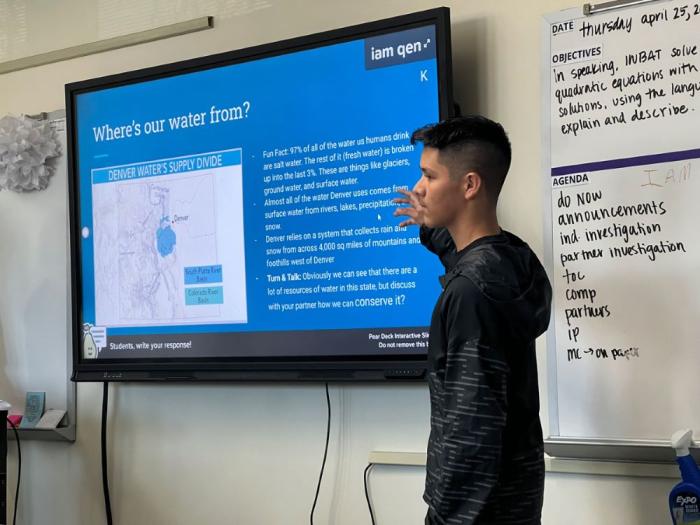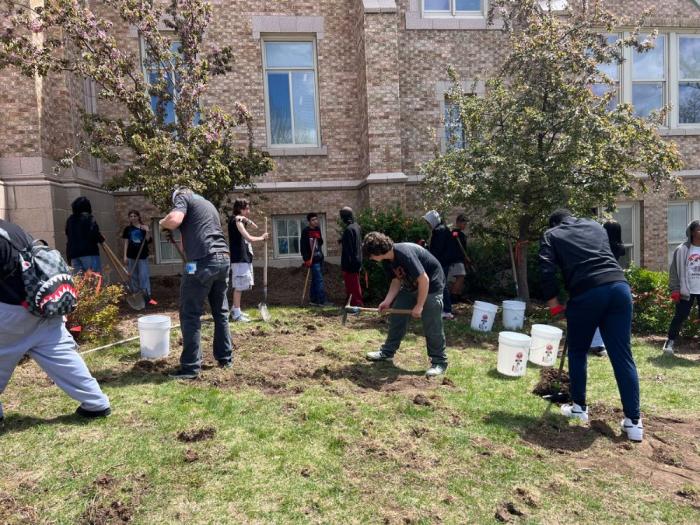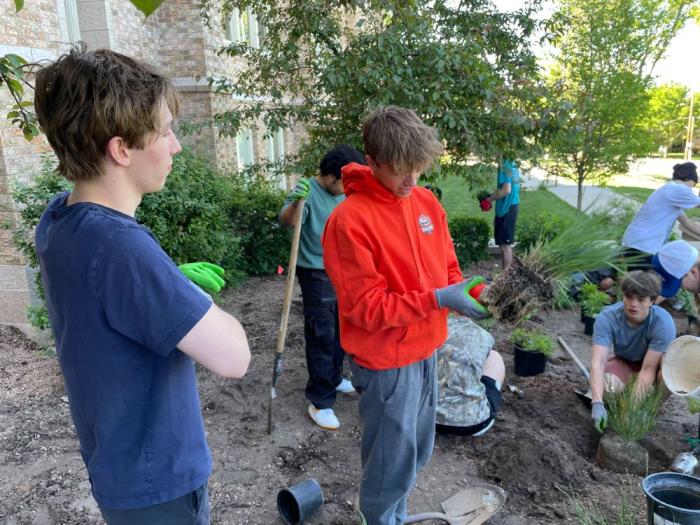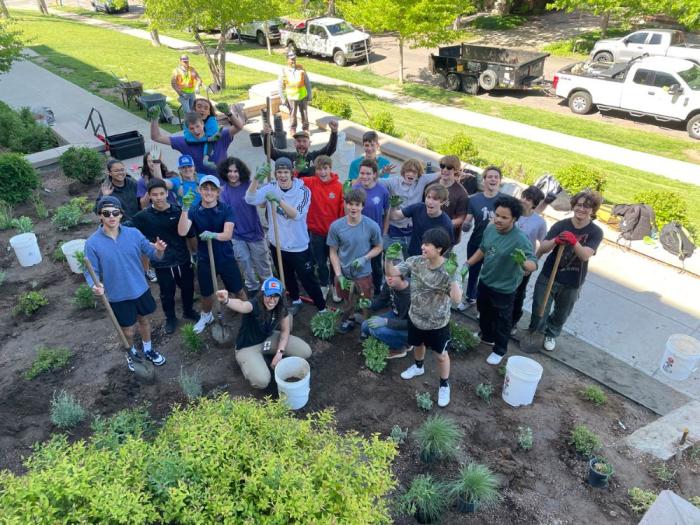Today’s kids: Helping save water for future generations
The front of a Denver high school has a new garden that looks great — and will save water down the road.
In May, four students at Denver School of Science and Technology: Cedar High School, worked with Denver Water’s Youth Education team to convert a section of water-intensive Kentucky bluegrass into a water-wise garden.
The students were part of the school’s Global Leadership Program.
“This year we asked students to take a global perspective about sustainability and water,” said DSST: Cedar teacher Julie Lang.
“We wanted the students to think about the dry climate that we live in here in Colorado, and what actions they could take in terms of water use and its effect on the environment.”
Junior students Kiko Almanza, Ramin McMullen, Tristan Niemczyk and Ewan Whalen came up with the idea to plant the garden. The group connected with Melissa Botteicher from Denver Water’s Youth Education team, which visits schools across the metro area to talk about water in Colorado.
“The section of grass was not being used for any activities and required a lot of water to keep it green,” Botteicher said. “So, we thought the space would look better and be more sustainable if we planted plants that use less water than the Kentucky bluegrass.”
Botteicher connected the high school students with students in Colorado State University’s Landscape Design and Contracting program, which is a concentration study area offered within CSU’s Environmental Horticultural major. The CSU students helped the teenagers create a design for the DSST: Cedar garden. Along the way, the high schoolers learned how Denver gets its water from the mountains and discovered the challenges that lie ahead in the West due to population growth and climate change.
The students researched plants that thrive in Colorado’s semi-arid climate and examined locations where landscape transformation is beneficial.
“I never really gardened before and this just seemed like something I wanted to learn about,” said Almanza. “By doing this we’re preserving more water here in Colorado.”
In early May, the group of four, along with their classmates, grabbed shovels and removed the old grass to prepare the space for the new plants. A few weeks later, the students returned to put several dozen water-wise plants in the ground.
The students got help from Arbor Valley Nursery, which supplied and delivered the plants, and Designscapes, which helped with the installation and irrigation updates.
The new garden is an example of ColoradoScaping, which is the term used for landscaping that uses plants that are beautiful and thrive in the Front Range of Colorado’s semi-arid climate.
Removing Kentucky bluegrass and replacing it with water-wise plants can save anywhere from seven to 12 gallons of water per square foot per season.
The plants not only use less water than Kentucky bluegrass, but also provide critical habitat, shelter and food for birds and insects.
“It's going to be a no-irrigation-required garden within two or three years that should significantly reduce the school's water use,” Niemczyk said.
“My teammates and I really care about sustainability,” McMullen said. “I feel very proud and hope projects like this expand to other places in Denver as well.”
“The garden looks great and I'm really happy we did this, especially with our classmates,” Whalen said. “I learned how we get our water from the mountains and why it's important for us to save water.”
“I'm just so proud of these kids. This has been really fun and the new plants look amazing,” Lang said. “I’m so impressed with how quickly our students just started working and getting their hands dirty. I really feel like they made an authentic difference.”
Learn more about Denver Water’s Youth Education team.
Lang said she hopes to replace more grass around the school in the future and hopes other schools and homeowners can learn from what the students accomplished at DSST: Cedar.
“These students are our future decision makers and will be responsible for helping solve the water challenges that lie ahead,” Botteicher said.
“These experiences provide a context for meaningful exploration about water and water conservation and empower the kids to take action that really makes a difference.”



